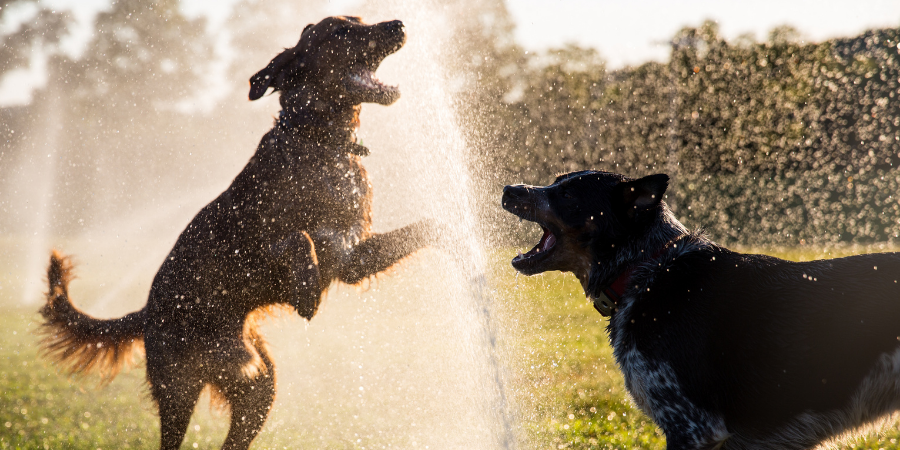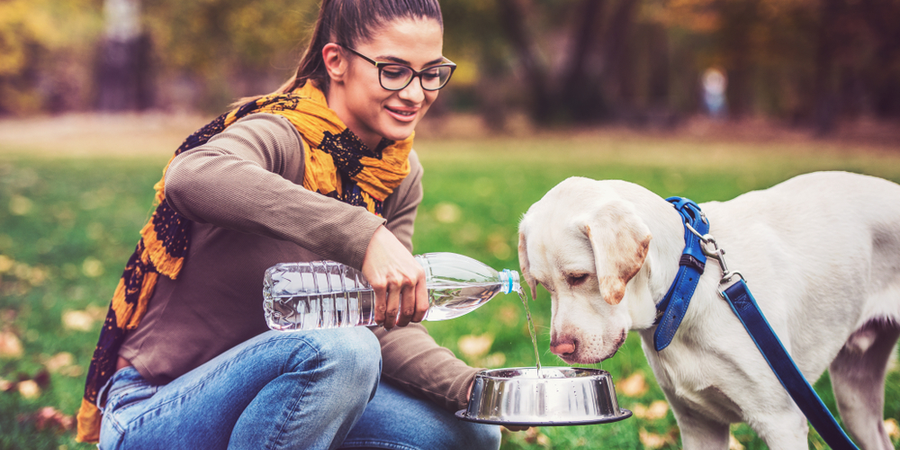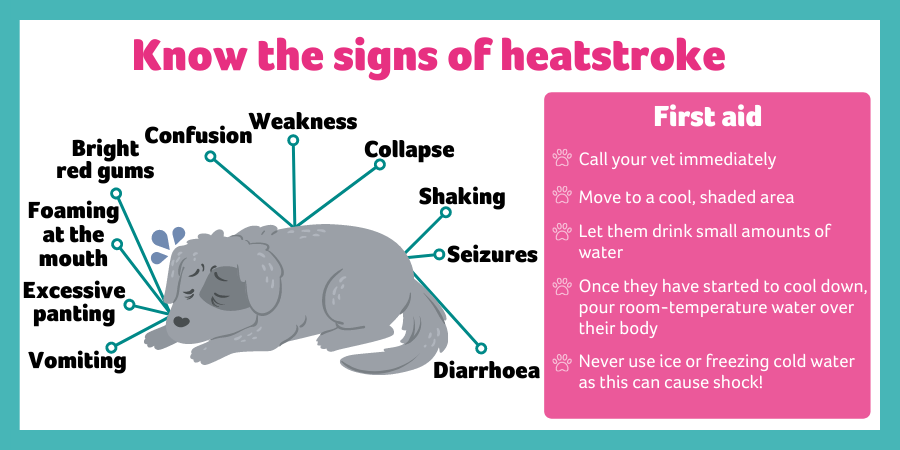Panting is part of a dog’s normal cooling process. Dogs don’t sweat in the same way that we do, so in order to regulate their body temperature and cool themselves down, they need to pant. While there are occasions when your dog may be more likely to pant, you won’t normally see this behaviour from a relaxed and comfortable pooch.
Knowing whether your dog is panting too much can be difficult, but it’s important to know when the signs may be pointing to something more serious. Our vets talk us through what panting means and how to tell when your dog may be panting excessively.
When might I see my dog pant?
The main reason you may see your dog panting is if they are trying to cool themselves down. When panting, they breathe out hot air and breathe in cool air, while allowing water to evaporate from their tongue and mouth. This cools down their blood stream and their bodies.
Panting is usually a response to something, so you are more likely to see your dog pant after exercise or on a warm day.

Flat-faced dogs such as Pugs, Bulldogs or French Bulldogs, and pets that are overweight, may also be more prone to panting. In this case, it’s important to take extra care to look out for the signs of excessive panting, so you are able to get help if they need it.
Stress and anxiety
Dogs can also pant when they are feeling stressed or anxious. When you notice your dog panting, keep an eye on their body language, as this can help you determine if your dog is panting because they are feeling worried. Pinning their ears back, tucking their tail underneath them or hiding away and avoiding eye contact are all signs of stress.
If your dog is showing these signs regularly, it’s important to take them to the vet to get them help and try to find the cause of their stress.
Illness or pain
Although it’s less common than other causes, there are some illnesses that can make your dog need to pant. Problems like BOAS, heart disease, Cushing’s Disease or a high temperature/fever can make your dog pant and breathe more quickly. Often, your dog will also show other symptoms of their illness, for example coughing, drinking and peeing more or having low energy. Pain and injuries can also make your dog pant, especially as they will often feel stressed if something hurts.
What should I do if my dog is panting?
If you see your dog panting, it can be useful to think about the situation to see if there’s an obvious reason why. By asking yourself whether it’s a warm day, if they’ve recently exercised or whether they’re likely to be feeling anxious, you may be able find the underlying cause and provide them with the correct care.
During hot or humid days, always take extra care to prevent overheating, such as avoiding exercising your pooch during the hottest parts of the day, and never leaving them in a hot car or areas of the house that might heat up quickly, such as porches or conservatories.
If you see your dog panting, try taking the following steps:
- Stop exercise
- Provide them with a drink of fresh, clean water
- Give them the time and space to calm and cool down

How can I tell if my dog is panting too much?
Your dog’s panting is part of their normal cooling process, but if they’re panting too much it could be a sign of a problem.
Often, heavy panting is caused by excessive exercise or due to very hot conditions. Excessive panting can be a warning sign that your dog is becoming dangerously hot or starting to struggle with their breathing, so recognising the warning signs is crucial to helping your dog. If your dog is showing the following symptoms, give first aid and contact your vet immediately:
- Fast, shallow breathing
- Panting with their tongue curling upwards
- Not wanting to move/low energy
- Stretching out their neck
Heatstroke
If your dog continues to get hotter despite their panting, this can lead to heatstroke. This is a life-threatening emergency. If your dog is suffering with heatstroke, you may notice these additional symptoms:
- Breathing very heavily/unable to stop panting
- Foaming at the mouth
- Bright red gums
- Shaking
- Struggling to breathe
- Weakness and collapse
- Confusion
- Vomiting and diarrhoea
- Seizures

Heatstroke can be fatal very quickly, so if you spot any symptoms, contact your vet immediately – and remember that there are many ways to prevent them from overheating, which will reduce the risk of your dog developing heatstroke!
Overall, there are lots of reasons why your dog might pant and not all of them will be a problem – especially on a warm day. However, a happy and relaxed dog shouldn’t be panting, so if your dog is panting with no obvious cause, or pants a lot of the time, you may need to talk to your vet as it could be a sign of illness.
Take a look at our pet cooling products to help keep your dog cool this summer.
